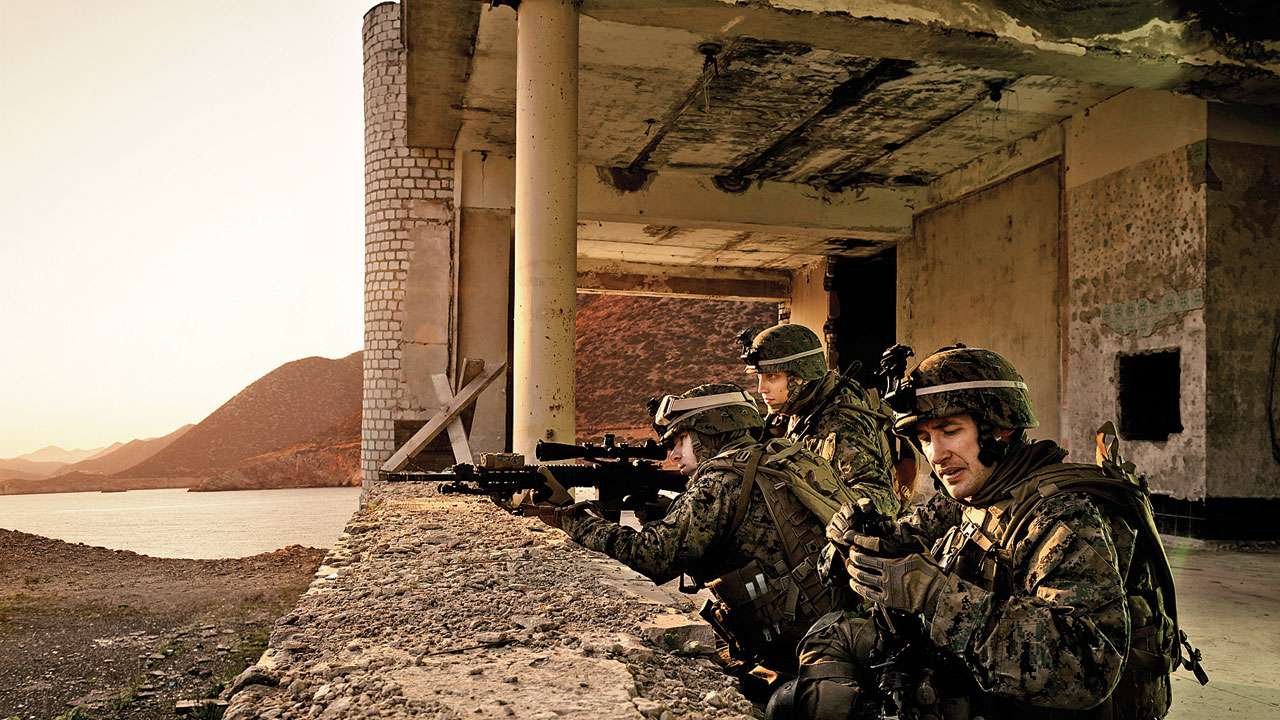
The Euphrates emerges where the Karasu and Murat rivers merge in northeastern Turkey and flows to join the Tigris near Basra in Iraq.
Historically, Mesopotamia the region lying between the Euphrates and Tigris, was the heartland of the Babylonian and Assyrian empires. It is today the territory of modern-day Turkey, Syria and Iraq and the centre of a conflict that has engulfed the Middle East.
Where it crosses Syria, a state torn in the conflict between President Assad and a plethora of anti-regime groups, the Euphrates today marks the rough dividing line between forces backed by Iran and the United States.
The area to the river’s east is controlled by the Kurdish Syrian Democratic Forces (SDF) backed by the United States, while pro-regime forces backed by Iran control the western banks.
This unstated yet clearly demarcated balance was disturbed when President Donald Trump tweeted on December 19 about the immediate and unconditional US retreat from the area east of the Euphrates river.
This was not significant in terms of the numbers of troops that will be withdrawn, but of the deterrence that the US provided through air power and its commitment as the global superpower.
Should this deterrence be removed, the SDF whose backbone is the Kurdish Peoples’ Protection Units (YPG), would feel the pressure from multiple actors in the region, including Russia, Turkey and Iran as well as the Syrian regime that is increasingly gaining ground.
Turkish President Recep Tayyip Erdogan (in an opinion piece on January 7 in the New York Times) reacted to the planned withdrawal by positing Turkey as the regional alternative who could ‘get the job done’.
Proposing a comprehensive strategy to eliminate the root causes of extremism, President Erdogan has called for a stabilisation force featuring fighters from all parts of Syria (except those with links to terrorist organisations), adequate representation of all communities in popularly elected councils and most importantly, a willingness to shoulder the responsibility of transition to stable governance.
Implicit in the offer is the stipulation for the liquidation of the YPG, which is the chief US ally in Syria, but which Ankara identifies as a terrorist affiliate of the banned Turkish group, the Kurdistan Workers’ Party (PKK), and the establishment of Turkish control in the east of Euphrates, a region covering about 27 percent of Syrian territory.
This is not the first time Turkey has suggested a ‘zone of influence’ as a surrogate buffer zone. Similar offers of a ‘buffer zone’, signalling its initial intentions of a serious involvement, had been made by Turkey earlier as a measure to protect refugees fleeing the conflict in Syria. What is significant this time is President Trump’s tweet giving Turkey the green signal for actually setting up a 20-mile-wide buffer zone within Syria.
The proposed buffer zone under Turkish control has been rejected by the Syrian Kurds, who have called for the deployment of UN forces along the line separating Kurdish fighters from Turkish troops.
Identifying Turkey as one of the parties to the ongoing dispute, senior political leader Aldar Khalil has argued that as one of the players involved, Turkey cannot guarantee stability.
Complicated ethnic overlaps mean that the Kurdish population in the region now live across Turkey, Syria, Iran and Iraq with varying levels of autonomy.
While Turkey has accepted northern Iraq’s autonomous status over time, the dilemma is about the future of the Syrian Kurdish areas, adjoining south eastern Turkey, and the precedence that the autonomous status of the Kurds would create for the Kurdish population in Syria and Turkey.
Turkey has battled domestic Kurdish insurgency for decades and has only recently begun negotiations for conciliation. It therefore fears the domestic consequences of the creation of a contiguous area under Kurdish control in northern Syria.
When the Syrian crisis started in March 2011, Syria’s Kurds adopted an ambivalent position. However, in July 2012 they took control of several cities in the north where Kurds are in a majority.
The Kurdish Democratic Union Party (PYD), which governs this region bordering Turkey, is affiliated to the Kurdistan Workers Party (PKK) and has clearly expressed its interest to form an autonomous zone in Syria comparable to Iraqi Kurdistan, a move Ankara opposes.
Turkey’s Syrian policy, in which President Erdogan had sought President Assad’s overthrow, therefore became counterproductive when it contributed to bringing Syrian Kurds into the fray.
The grandiose Turkish rhetoric faces challenges on a number of fronts. The Turkish plan outlined in the New York Times piece would test Turkish military, administrative and financial capabilities, unless supported by US military commitments.
In that case, it would face opposition from Russia, which supports the return of the Kurdish-held regions to the Assad regime and the Astana process of which it is a part.
It would also affect its position in western Syria where it has made inroads into Idlib with Russian support. Syrian Kurds are reportedly in favour of allowing the Assad regime jurisdiction over their areas, rather than surrender control to the Turkish. And most significantly, the January 16 attack on a US military convoy in the northern city of Manbij has raised questions about the practicality of the withdrawal of American ground presence in Syria.
This was the sixth major attack by the Islamic State in less than a month and has raised questions about a rhetoric centered around the ‘defeat of the Islamic State’ and reconstruction in a post Islamic State era. Experiences in Iraq and Afghanistan show that any such premature assumptions should be avoided.
Author is Director, Asia in Global Affairs, Kolkata